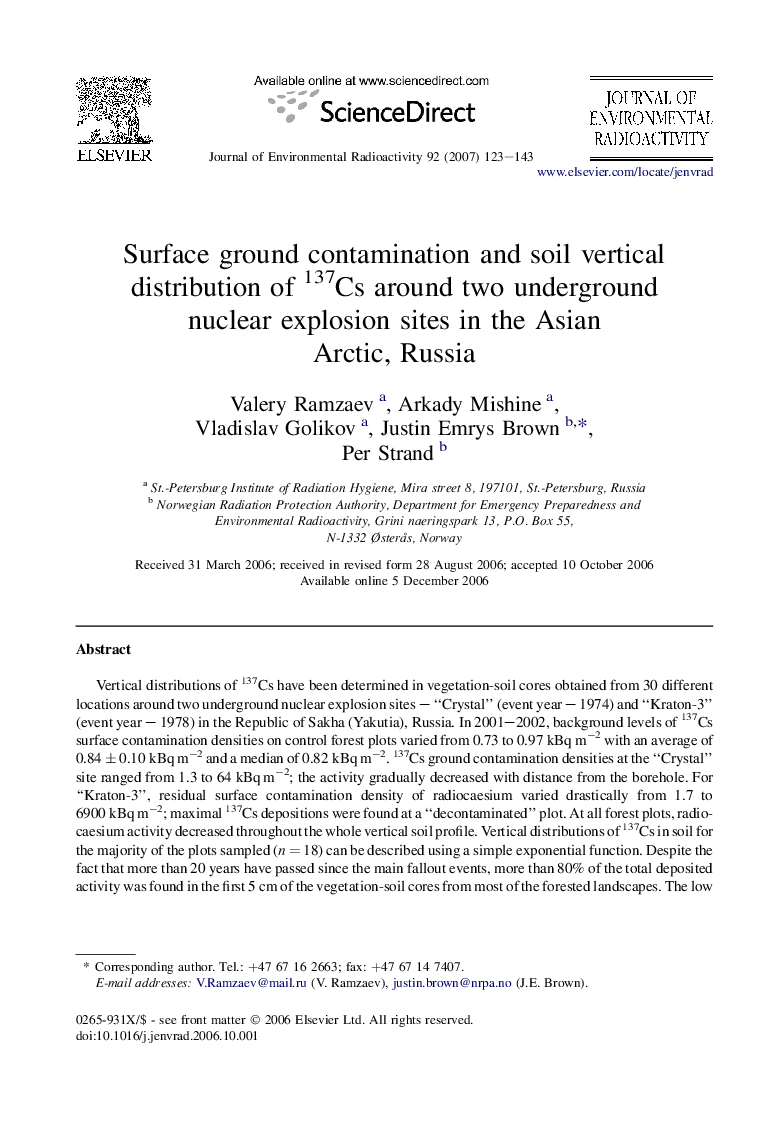| Article ID | Journal | Published Year | Pages | File Type |
|---|---|---|---|---|
| 1739526 | Journal of Environmental Radioactivity | 2007 | 21 Pages |
Vertical distributions of 137Cs have been determined in vegetation-soil cores obtained from 30 different locations around two underground nuclear explosion sites – “Crystal” (event year – 1974) and “Kraton-3” (event year – 1978) in the Republic of Sakha (Yakutia), Russia. In 2001–2002, background levels of 137Cs surface contamination densities on control forest plots varied from 0.73 to 0.97 kBq m−2 with an average of 0.84 ± 0.10 kBq m−2 and a median of 0.82 kBq m−2. 137Cs ground contamination densities at the “Crystal” site ranged from 1.3 to 64 kBq m−2; the activity gradually decreased with distance from the borehole. For “Kraton-3”, residual surface contamination density of radiocaesium varied drastically from 1.7 to 6900 kBq m−2; maximal 137Cs depositions were found at a “decontaminated” plot. At all forest plots, radiocaesium activity decreased throughout the whole vertical soil profile. Vertical distributions of 137Cs in soil for the majority of the plots sampled (n = 18) can be described using a simple exponential function. Despite the fact that more than 20 years have passed since the main fallout events, more than 80% of the total deposited activity was found in the first 5 cm of the vegetation-soil cores from most of the forested landscapes. The low annual temperatures, clay-rich soil type with neutral pH, and presence of thick lichen-moss carpet are the factors which may hinder 137Cs transport down the soil profile.
